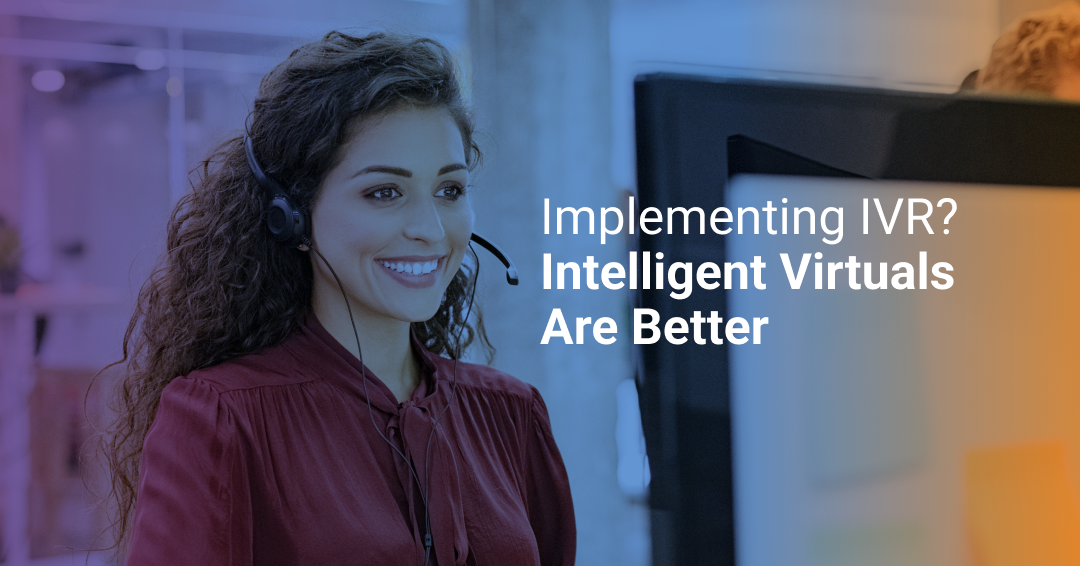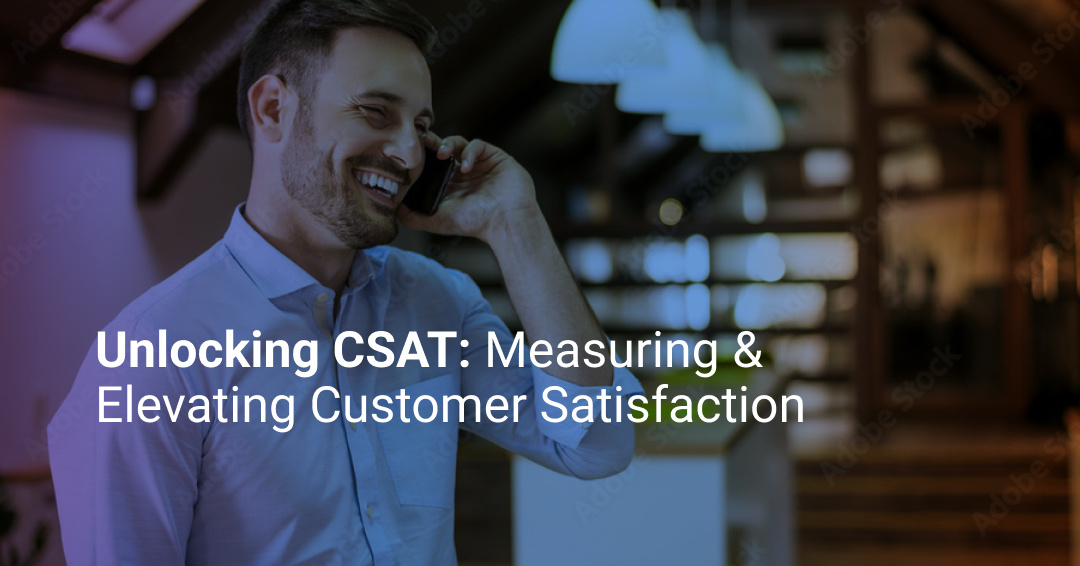12 Call Center Metrics You Should Be Using to Improve CX in 2025
Call center metrics are the most important performance indicators that monitor how effectively your call center is running. This includes anything...

Interactive voice response (IVR) systems allow contact centers to serve more customers by giving customers more control over their experience. Instead of having agents pick up every call, a voice response system helps callers solve their problems by providing them with multiple menu options and prerecorded prompts. The user then selects the option closest to their needs and finds more effective options to solve the problem, or they can also select to speak to an agent if need be.
Beyond the keypad, more advanced IVR versions also use voice recognition technology to listen to customers and help them redirect their experience based on their responses. While these voice recognition technologies for IVRs are limited, they can be helpful and are often the preferred choice rather than using the keypad.
To understand how IVRs work, think of them as a buffer between your customer representative and the end user. Instead of having agents pick up every call and trying to figure out how to help customers, they can be supported by an IVR system that:
While the phone tree can be much more complex, this is essentially how it works. Some more advanced features include cross-referencing callers with your internal databases to map potential issues from the get-go, prioritizing VIP callers, etc.
To learn more about CX terms please visit this entry.
Call centers benefit from using IVRs, which improve efficiency, let agents focus on more complex tasks, and even improve customer service. However, as with all technologies, IVRs have lost their charm in this age because a newer, more robust solution emerged.
Intelligent virtual agents (IVAs) are similar to IVRs in the sense that they also act as digital concierges, redirecting users to the correct department and reps. However, they go further by adding a natural language processing step and artificial intelligence to understand better why customers are calling and how to solve their problems.
While IVRs are helpful for contact centers, IVAs are a much better option for improving operations, solving customer queries, and helping your agents do their best work. To put it into perspective, think of IVRs as VCRs and IVAs as online streaming services. Can you watch movies on both systems? Sure, you can, but would you rather have thousands of options and a much richer experience or be limited by your VCR tapes? If you’re like most people, online streaming services are the preferred choice, no matter how good your VCR tapes are.
To learn more about the differences between IVR and IVA, please check out this entry, where we discuss the topic in detail.
As we discussed previously, IVRs are helpful for contact centers, but they also have a limited set of options. Here, we will discuss some of the most common limitations and challenges your customers may face when interacting with an IVR system.
Our phones have more technological solutions today than our great-grandparents experienced during their entire lifetime. In that context, customers are also more diverse and complex and have inquiries about their products and services that a pre-recorded IVR system may not cover. Of course, an IVR system could solve and handle some problems well. But just because your phone tree is really well built does not mean that you will be able to understand your customers' intent and find the right solution for each and every call.
Have you ever had to call a service line to find yourself trapped in an endless set of menus that seem to lead you nowhere or solve your problem? That may happen when you use an IVR system, which has only pre-recorded menus without a straightforward, informational design focused on solving problems. Having to repeat yourself through multiple menus, or even worse, having to speak to a machine that does not seem to understand you, can be quite frustrating.
This journey can massively affect your call resolution rates and overall customer experience, having clients in a negative emotional state once they reach a customer representative.
Setting up an IVR system can be a massive effort, especially for small businesses and contact centers in early growth stages. While the most basic versions will have a phone tree menu, generally, the more features you require, the higher the price. For example, if you want to record calls or queue callbacks, you may have to pay an additional fee.
While these limitations and challenges are evident, IVRs can also massively improve your customer service experience if you don’t have any systems. Ultimately, these systems help your agents do their best work and help your customers reduce the friction required to solve their problems.
Even though IVRs are not the current standard, they can still solve more fundamental problems. Also, having a very well-organized phone tree set of menus can be massively helpful to clients, reducing the time it takes to connect with the correct department.
Call centers can create many improvements by using IVR technologies effectively. While we have already discussed their limitations, they are an excellent introductory technology for companies to experiment with before jumping into more robust solutions like IVAs.
Before setting up your IVR system, business leaders must consider the following aspects to ensure your IVR experience works well and helps customers and agents.
It’s vital to ensure that your menus make sense for your customers. Most industries have specific terminology for their category, but just because that exists doesn’t mean your customers will know it. Try to keep things simple and use language that is intuitive and pretty much anyone can understand. More importantly, try to build the menus based on actual user journeys and common problems.
Your menus should be there to serve your customers first. If that happens, your entire service design and CX will massively improve.
Once again, considering the end customer experience means being transparent and using simple language for all prompts and options. Your menus should not allow interpretation. Instead, instructions and the way the conversation happens should be intuitive, starting with more general topics and queries and progressing to more specialized and complex subjects.
While we already have touched upon IVR limitations regarding personalization, that should not stop you from trying everything you can in your IVR pre-recorded system to improve your CX. For example, you can identify the type of customer calling by accurately mapping your customer databases and synchronizing them with your IVR. If your organization offers services or products in multiple verticals, the IVR phone trees could also change based on that.
If your clients speak multiple languages, you should include an option to switch between them to ensure your customers feel comfortable at all times. We live in a globalized world, where people move all over to start a life. Adding their language as part of your customer service experience can be helpful and improve your brand’s perception of being more inclusive.
Having the right metrics to understand your IVR systems' effectiveness is vital for any contact center. For example, measuring abandonment rates or first-call resolution rates will help you determine how effectively your menus connect customers to the right agent. While there are industry standards for most call center metrics, what matters most is finding your baseline and constantly pushing to improve your results.
At the same time, make sure you use all the data collected to improve your overall CX and operations. If you know that a particular department takes longer than expected to solve a problem, you can provide training on call resolution best practices.
Customers have many opinions about your service. While you may want to use traditional contact center metrics to determine efficiency and effectiveness, training your customer representatives to capture as much feedback as possible from customers can be a massive help for your entire CX. With more information, you could update the phone trees, for example, to include more pressing matters your customers may be concerned about.
Contact centers have a primary function: to serve. Doing so well means listening to customers and improving your IVR system to match their needs.
Finally, organizations must align general agent training and workflows around the IVR systems. Ultimately, both of these components of your contact center must be in sync to help agents reduce the amount of work they do. For example, repetitive tasks that could be automated to an IVR menu should be set up. In parallel, IVRs can help agents capture information to do their best work serving customers.
Note: For more tips for contact center automation and how to improve customer experience, please check this entry.

IVRs are common across most industries. Below, you will find examples of the most common use cases for IVRs that have helped businesses improve customer service and reduce agents’ workloads.
Whether or not your company should implement an IVA is not much of a question if you prioritize customer experience. IVRs, as we have discussed, can be helpful in streamlining some interactions between users and companies, but they are limited given their pre-built nature. They can't adapt their menus dynamically and automatically based on the caller's intent, truly understand the flow of a conversation, or improve customer service.
IVAs, on the other hand, are a much better option because of their artificial intelligence and natural language processing abilities. Unlike IVRs, IVAs can respond to many more queries, provide support, sound more natural, and even predict calls based on historical data.
If there ever was a time to include IVAs in your call center, it is now. IVRs can surely help, but in the contact center industry, like most industries, artificial intelligence and the ability to better serve customers are predominant factors for future success.
While IVRs can help you solve customer experience challenges, IVAs are a far superior technology you should consider first. Frankly, not all companies are ready for IVAs. Having said that, If you have a more limited service or product, an IVR might still be able to help you solve some of your customer service needs.
This may lead to the misconception that you’re not ready for an IVA and settle for an IVR technology. But, before you do, checking IVA technologies and how much more you can do with them is almost always the way to go. It may be a bit more complex to set up some IVAs at the beginning, but with Mosaicx, all of the heavy lifting and integrations are taken care of; that way, you can focus on service, not IT.
Still unsure about IVA? Talk to one of our solution specialists and see how the right combination of AI, advanced technology, and human expertise can help you take your CX to the next level.

Call center metrics are the most important performance indicators that monitor how effectively your call center is running. This includes anything...

Businesses across industries have changed or evolved over the decades, but one thing that has remained the same is that their growth is pretty much...

Customers have several major expectations from modern businesses, but none is as challenging as them reading your mind to anticipate support you...